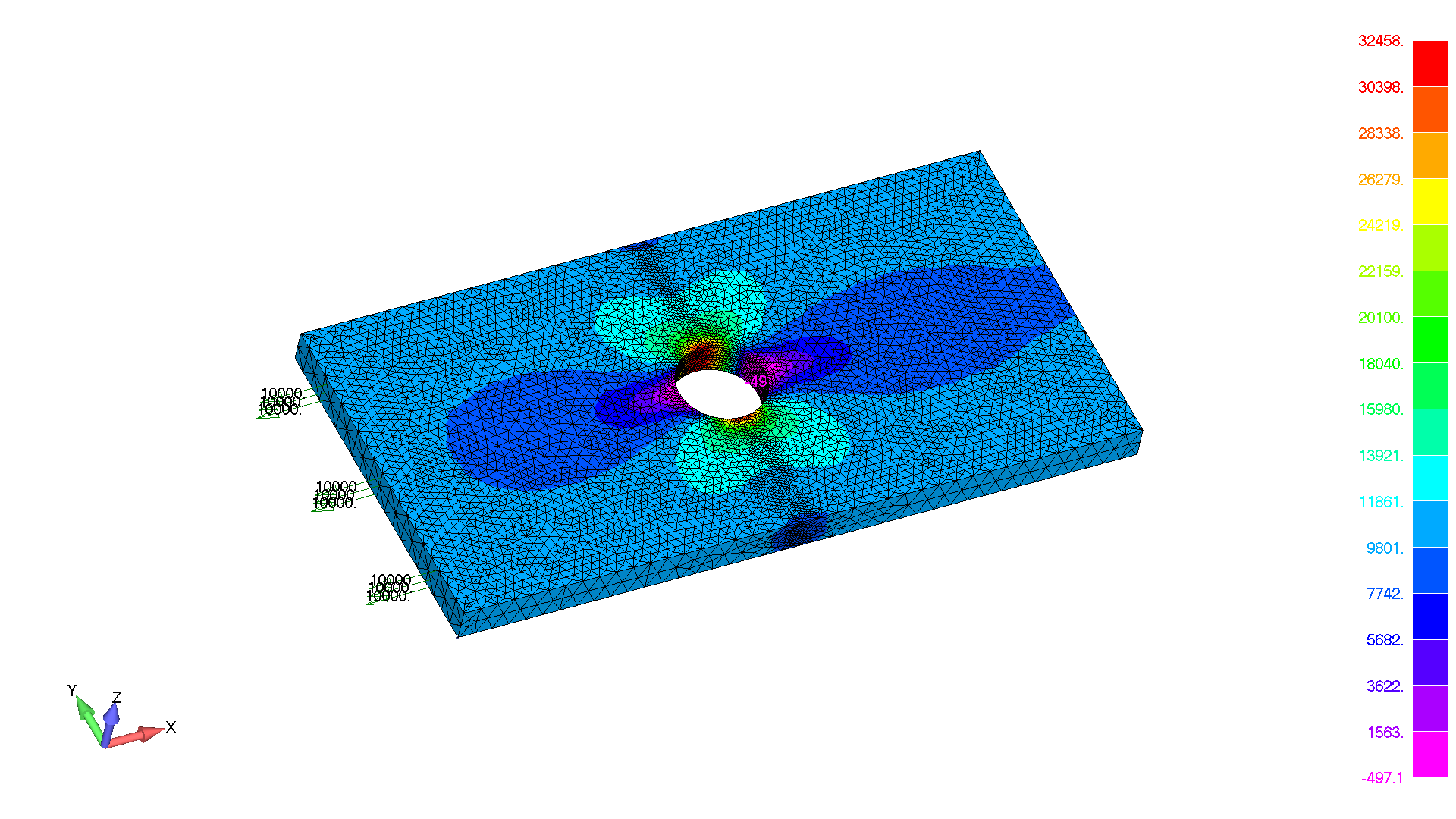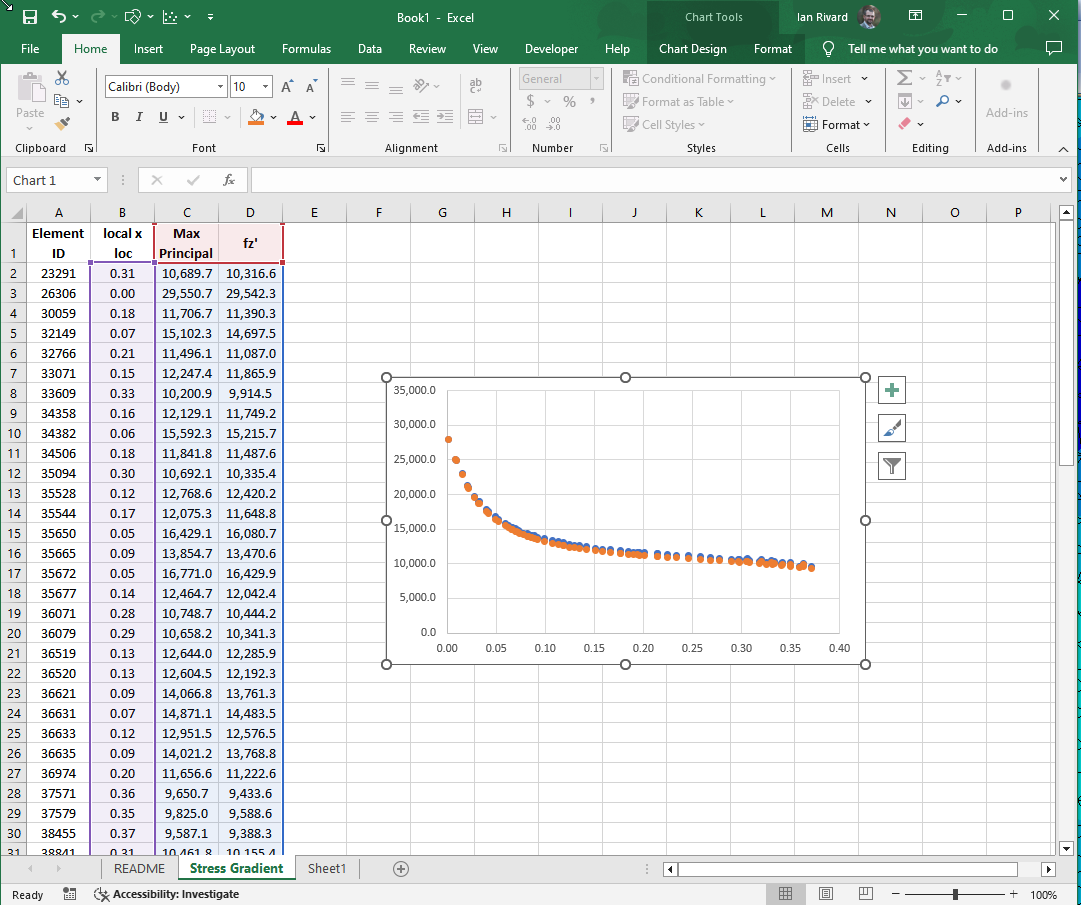|
Script Author: Ian Rivard This script is in Beta - more use cases and testing are required. Description: The script prompts the user for a load case, and elements. Typically, this is for tet-10 stress mesh on complex parts. The example below is a super simple example.
Use Instructions: run the tool and follow the prompts.
Requirements: A solved model with solid stresses in the results.
Notes & Example: The script will examine the selected elements and find the peak max principal stress. It will calculate the plane that is orthogonal to the maximum principal direction, create a coordinate system there. Then loop through surface elements of the elements selected and start to expand on surface elements that are connected to the peak stress and close to the orthogonal plane (like mode 1 crack propagation). After the script runs to the edge of the selected elements it creates an average vector for the "crack plane". Next, the script creates a new, rotated, coordinate system with local X going in the direction of the "mode 1 crack propagation" then it sends the results to excel and graphs them. Consider the following example: A plate with a hole in the center with an axial load. The stress gradient is wanted for the top surface, hence the top surface elements are selected at the prompt and the following results are posted to excel a few seconds later. The expected results are the classic kt of a hole in a flat plate results seen in many handbooks.
Note that local fz' stress is also posted. Since the direction of maximum principal stress can change, the stress along the initial vector of maximum principal is posted here as fz'. If the "crack plane" or vector along which the maximum principal stress is located is linear along the vector fz' and max principal will be essentially the same. If maximum principal changes direction along the stress gradient the orange and blue dots above will have a deviation, thus alerting the user that maximum principal is no longer aligned with the local 'x' vector. A stress gradient is often an input in crack growth analysis, so automation of the extraction, in lieu of brute force methods, or charting methods drastically helps improve analysis turn around time. Advanced Users: To our users: We appreciate feedback on our tools and encourage you to modify them to your specific needs. If you make an improvement you feel would be valuable to others, please submit it through our contribution page.
|
||


